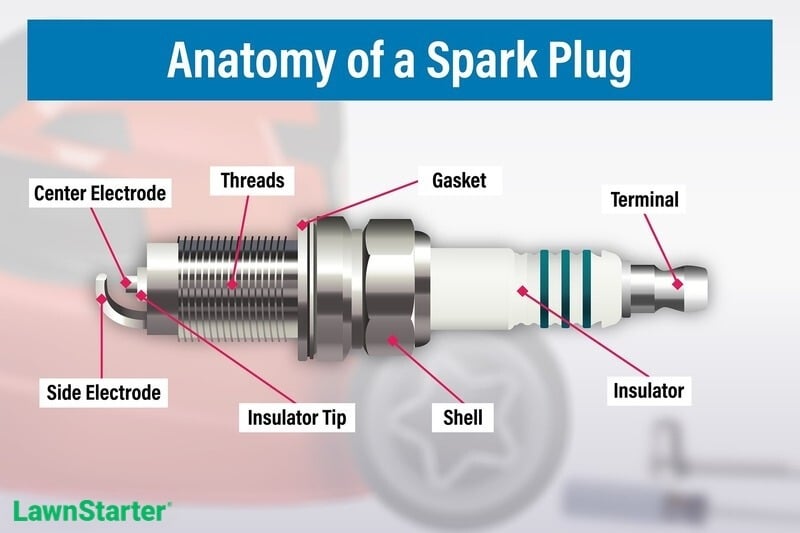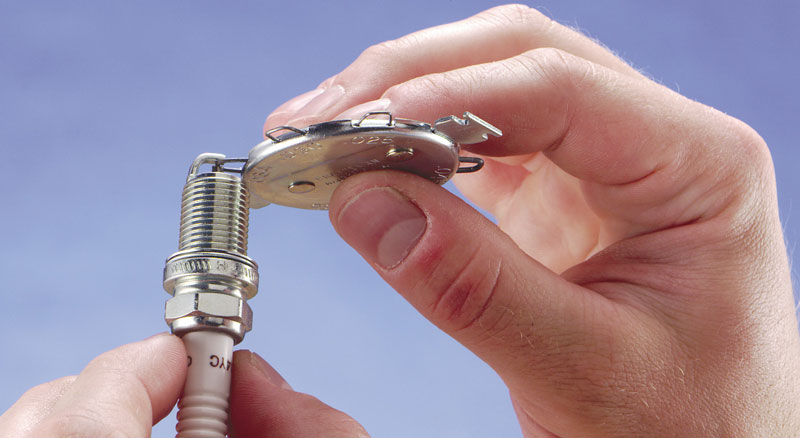Replacing the spark plug in your lawn mower is easy. It helps keep the engine running smoothly.
A well-maintained lawn mower ensures a clean, efficient cut every time you mow. Over time, spark plugs wear out and need replacing to keep your mower in good shape. This simple task can extend the life of your mower and improve its performance.
Whether you’re a seasoned gardener or a beginner, changing the spark plug is a straightforward job you can do at home. In this guide, we will walk you through the steps to replace a spark plug in your lawn mower. Let’s get started and make sure your lawn mower is ready for action.

Credit: www.tiktok.com
Safety Precautions
Wear safety gloves and disconnect the spark plug wire. Ensure the engine is cool to avoid burns. Use the correct tools to remove and replace the spark plug carefully.
Disconnecting The Spark Plug Wire
First, turn off the lawn mower. Ensure it is cool before touching. Then, locate the spark plug wire. Carefully pull the wire off the spark plug. Use a firm grip to avoid damage. Keep the wire away from the spark plug.
Wearing Protective Gear
Always wear protective gear when working on your lawn mower. Gloves protect your hands from cuts and dirt. Safety glasses shield your eyes from debris. Closed-toe shoes protect your feet. Long sleeves and pants cover your skin. This gear keeps you safe.

Credit: www.lawnstarter.com
Locating The Spark Plug
The spark plug is usually on the side of the engine. It has a thick wire attached to it. Look for a small metal piece. This is the spark plug.
Make sure the area is clean. Dirt can fall into the engine. Use a brush to remove any debris. This helps to see the spark plug better.
Removing The Old Spark Plug
Gently remove the old spark plug using a wrench. Ensure the area around the plug is clean before removing it.
Using The Correct Socket Wrench
First, make sure the lawn mower is off. Find the spark plug. Use the correct socket wrench to loosen it. Turn the wrench counterclockwise. Remove the spark plug gently. Be careful not to damage the threads.
Inspecting The Old Spark Plug
Check the old spark plug for any signs of wear. Look for black soot or oil. This can mean engine problems. If the spark plug is worn, it needs replacing. A clean spark plug is crucial for good engine performance.
Preparing The New Spark Plug
Preparing the new spark plug involves checking the gap and ensuring it is clean. This step helps your lawn mower run smoothly. Make sure to use the correct tools for a proper fit.
Gapping The Spark Plug
Check the gap using a spark plug gap tool. The tool should slide between the electrode and the plug. Adjust the gap if needed. Bend the electrode gently to make it right. The gap size is usually found in the lawn mower manual. Correct gap is important for engine performance.
Applying Anti-seize Compound
Apply a small amount of anti-seize compound to the spark plug threads. This helps prevent the plug from sticking. Use a clean cloth to spread the compound evenly. Avoid getting the compound on the electrode. This keeps the connection clean. Anti-seize makes future removal easier. Only a thin layer is needed.
Installing The New Spark Plug
First, insert the new spark plug into the hole. Turn it by hand until snug. This ensures it is properly aligned. Do not use tools yet. Hand-tightening prevents damage to threads.
Next, place the socket wrench over the spark plug. Turn the wrench clockwise. Give it a firm but gentle turn. The plug should be tight but not overly so. Avoid over-tightening as it can cause damage. A snug fit is enough for proper function. Finally, remove the wrench.
Reconnecting The Spark Plug Wire
First, grab the spark plug wire. Push it onto the spark plug firmly. Make sure it clicks into place. This ensures a secure connection. If the wire feels loose, adjust it. A loose wire can cause issues. Check it twice to be sure.
Start the lawn mower. Listen for a smooth engine sound. If the mower starts easily, the connection is good. In case it doesn’t start, check the wire again. Ensure everything is tight and secure. This step is crucial. Proper connection ensures the mower works well.
Final Checks
Before starting, make sure the area is clear. Check that the spark plug is tight. Next, fill the tank with fresh fuel. Pull the starter rope gently. Listen to how the engine runs. It should start smoothly.
Pay attention to any strange sounds. The engine should run without sputtering. Watch for smoke from the exhaust. If there is any, something might be wrong. Check the oil level. It should be at the right mark. If the engine stalls, check the spark plug again.
Maintenance Tips
Check your spark plug every month. Dirty or worn spark plugs can cause problems. Clean the plug with a wire brush. Replace it if it looks damaged. Always keep a spare plug. Good maintenance ensures your lawn mower runs well.
Replace the spark plug after 25 hours of use. If the engine misfires, change it sooner. A fresh plug means better performance. Follow the manual for best results. Don’t forget to check regularly.

Credit: www.briggsandstratton.com
Conclusion
Replacing the spark plug in your lawn mower is simple. Follow the steps outlined above. Ensure safety by disconnecting the spark plug wire. Choose the correct spark plug for your model. Use the right tools to remove the old spark plug.
Install the new spark plug carefully. This small task can improve mower performance. Regular maintenance keeps your lawn mower running smoothly. Save money by doing it yourself. Happy mowing!
